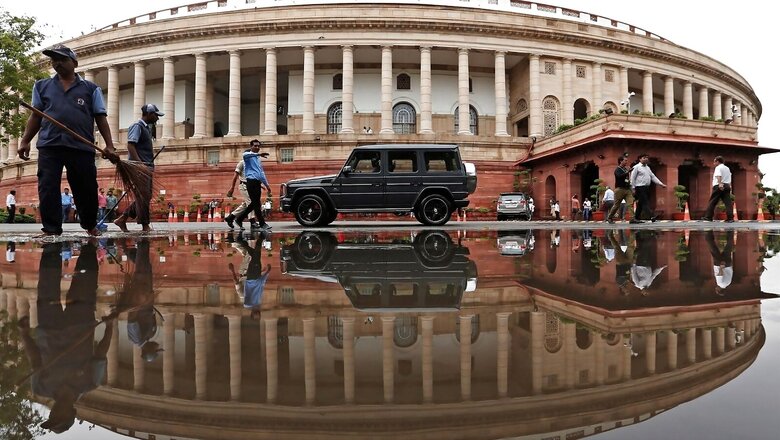
views
Members of Parliament of both Houses will vote on Saturday to elect the next Vice-President of India in an election where NDA candidate Jagdeep Dhankhar is pitted against Opposition pick Margaret Alva. With numbers stacked in favour of the NDA, former West Bengal governor Dhankhar is set for an easy win. Cracks were visible in opposition unity as Mamata Banerjee’s Trinamool Congress decided to abstain from voting alleging lack of consultations while deciding on the name of Alva.
The 80-year-old Alva is a Congress veteran and has served as governor of Rajasthan and Uttarakhand, while the 71-year-old Dhankhar is a Jat leader from Rajasthan with socialist background. Alva, however, received the backing of regional party Telangana Rashtra Samithi (TRS) on Friday, two days after Aam Aadmi Party and Jharkhand Mukti Morcha (JMM) lent their support to the opposition candidate. The AIMIM has also extended its support to Alva. With the support of some regional parties like the Janta Dal (United), YSRCP, BSP, AIADMK and Shiv Sena, the NDA nominee is likely to get over 515 votes, enough for a comfortable win for him.
Members of Lok Sabha and Rajya Sabha, including nominated members, are eligible to vote in the vice presidential poll. The term of incumbent M Venkaiah Naidu ends on August 10. The vice president is also the chairperson of Rajya Sabha.
News18 takes a look at the election process:
Office of the Vice-President
According to Article 63 of the Constitution, “there shall be a Vice-President of India”. Under Article 64, the Vice-President “shall be ex officio Chairman of the Council of the States” (Rajya Sabha).
Article 65 says that “in the event of the occurrence of any vacancy in the office of the President by reason of his death, resignation or removal, or otherwise, the Vice-President shall act as President until the date on which a new President…enters upon his office”.
How is the V-P elected?
The Vice-President “shall be elected by the members of an electoral college consisting of the members of both Houses of Parliament in accordance with the system of proportional representation by means of the single transferable vote and the voting at such election shall be by secret ballot”.
The Electoral College for the 2022 polls consists of 233 elected members of Rajya Sabha, 12 nominated members of Rajya Sabha, and 543 elected members of Lok Sabha, adding up to 788 members.
Under the Constitution, the Vice-President “shall not be a member of either House of Parliament or of a House of the Legislature of any State”.
There is no concept of open voting in this election and showing the ballot to anyone under any circumstances in the case of presidential and vice-presidential elections is totally prohibited, the EC has cautioned, adding that parties cannot issue whip to its MPs in the matter of voting. Unlike the presidential poll where voting takes place in multiple locations as elected MLAs, not nominated, also form part of the electoral college, in the vice presidential election, voting takes place in Parliament House.
What’s the eligibility criteria?
Article 66(3) says “No person shall be eligible for election as Vice-President unless he — (a) is a citizen of India; (b) has completed the age of thirty-five years; and (c) is qualified for election as a member of the Council of States”.
Under Article 66(4), “A person shall not be eligible for election as Vice-President if he holds any office of profit under the Government of India or the Government of any State or under any local or other authority subject to the control of any of the said Governments.”
Article 67 lays down that the “Vice-President shall hold office for a term of five years from the date on which he enters upon his office”. However, the Vice-President “shall, notwithstanding the expiration of his term, continue to hold office until his successor enters upon his office”.
Read the Latest News and Breaking News here


















Comments
0 comment